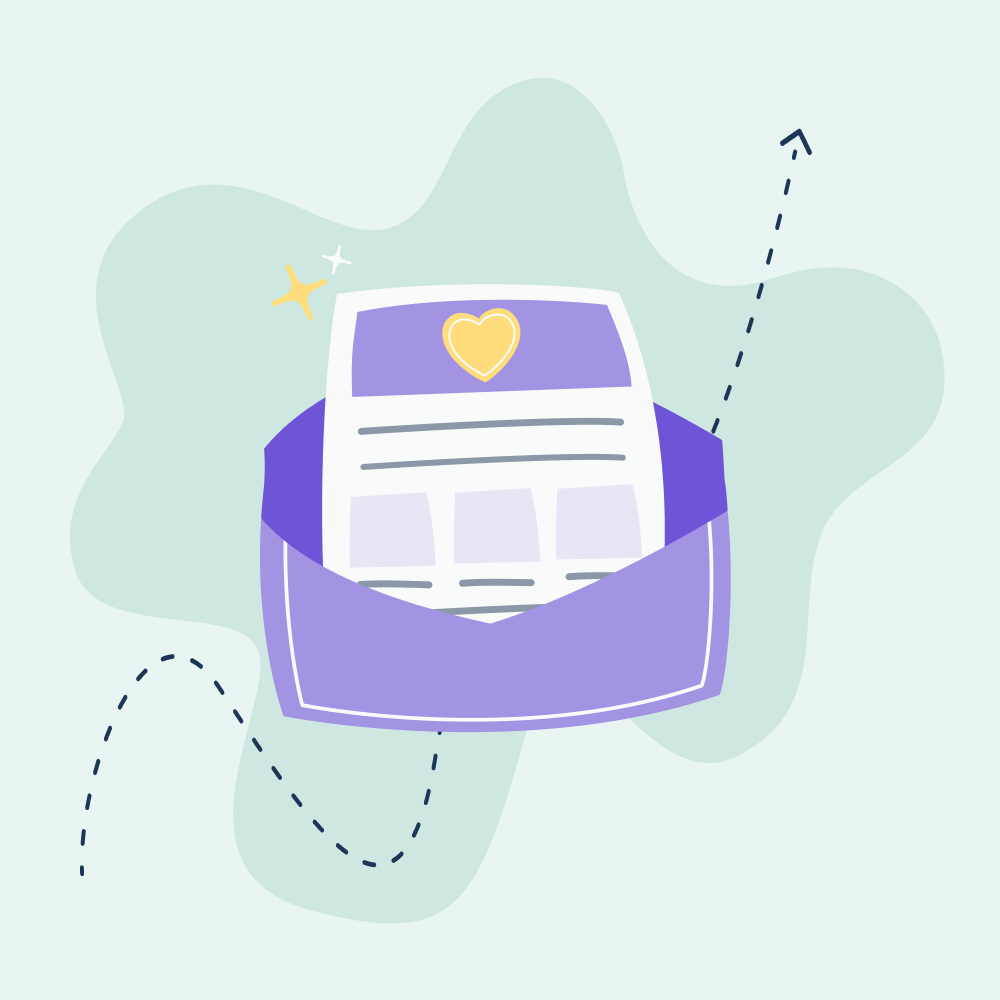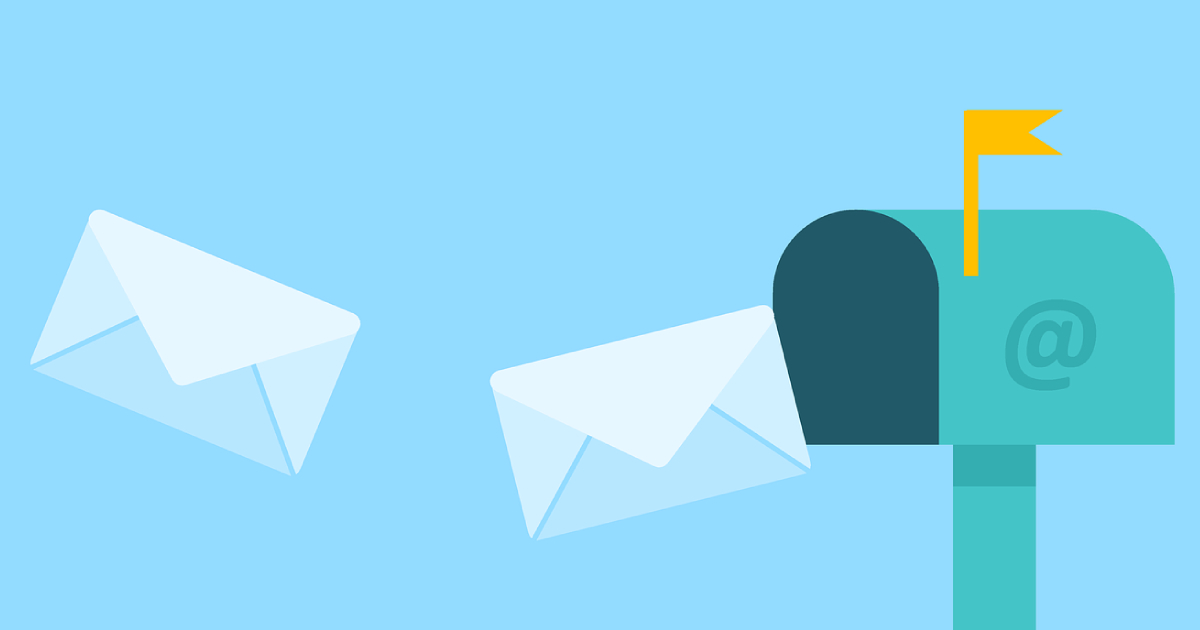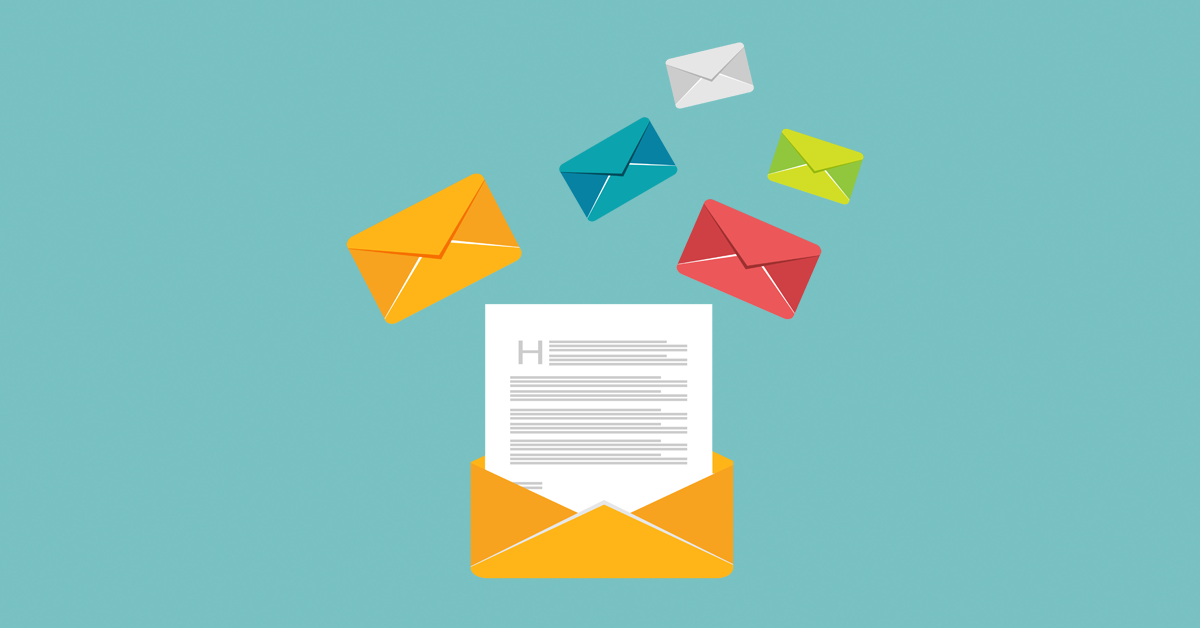Email marketing is one of the most effective tools at the disposal of every marketer. With more than four billion email users worldwide in 2020, email is a big part of the lives of your target audience. And this number is set to grow to 4.6 billion by 2025.
The importance of email marketing cannot be overstated. It is so important that 47% of marketers say that it is their most effective marketing channel.
However, not all businesses are aware of the benefits of email marketing. And because of this, they either do not put enough effort into creating strong email marketing strategies or do not bother with email marketing at all.
To help rectify that, in this article we’ll see why email marketing is important for every business.
Page Contents
1. Email marketing is cost effective
Every marketing dollar counts.
And the goal of every marketer is to find effective marketing channels that generate new customers and sales, with a positive return on investment (ROI), all while staying within budget. This is where email marketing comes into play.
It’s one of the most cost-effective online channels for reaching your target audience and engaging with customers. And when compared to traditional marketing channels like direct mail, TV, or print ads, email is far less expensive.
Email also delivers a high ROI. According to DMA, for every $1 you spend on email marketing, you can typically expect an average return of $42. To put this into context, marketers who use PPC advertising see an average return of $2 for every dollar spent. That means email marketing delivers 21x greater ROI than paid online advertising. This high ROI is especially great news for small businesses on a tight budget, though businesses of all sizes can benefit from email marketing’s cost effectiveness.
The best part of email marketing is that it can be as inexpensive as you need it to be. You can increase your email needs as your business scales. Depending on the platform you use and the number of subscribers you have, you can spend anywhere from $0 to $1,000 each month.
For example, EmailOctopus offers pricing plans based on the number of subscribers and emails you will be sending. For $24 per month, you can send up to 50,000 emails to 5,000 subscribers.
Plus, you don’t even need a website to get started with email marketing – you can build an email list without a website. Which makes email marketing even more cost effective and less labour intensive.
Factors that affect the cost of email marketing
Along with the email platform you choose, other factors will affect the cost of your email marketing. These include the following:
The quality of your email list
Email marketing services often charge according to the number of subscribers you have or the number of emails you send, or both. That’s why it’s important to routinely clean your list. Because if your email list is full of unengaged subscribers, and abandoned or wrongly spelt email addresses, you’ll be paying to market to people who aren’t even getting your emails.
Also, you should never buy an email list. While it might be tempting to get a ready-made list with thousands of email addresses, it will be worthless if the data is out-of-date. Not only that, but if the list you bought was curated illegally, you could be subject to penalties of up to $16,000 for every email you send.

The best practice is to build an organic list of active subscribers. One way to do this is by adding opt-in forms to your website.
Outsourcing or using internal team resources
Big businesses often have an entire team running their email marketing. Or they’ll hire external agencies to deliver important campaigns. However, this is costly and likely out of reach for smaller businesses or solopreneurs just starting out.
But thanks to the plethora of email marketing solutions available, brands no longer have to outsource their email marketing to expensive agencies. It can all be done in-house with the right talent and tools, at a very lower cost.
2. Email makes it easy to send personalised content
To remain competitive in a crowded marketplace, you need to show your customers that you understand them, listen to them, and can help them solve their problems. And that’s where personalisation comes in. With personalisation, you can craft messages, experiences, and offers to meet the unique needs of each customer.
And customers today expect personalised content from you. A 2018 survey from Accenture showed that 91% of consumers are more likely to shop with brands who recognise, remember, and provide them with relevant offers and recommendations.
Not only that but personalisation is a top email marketing trend for 2021, which means if you aren’t personalising your email campaigns, your competitors likely are.
Thankfully, email marketing makes it easy to deliver personalised content to subscribers and customers at scale.
But to do this effectively, there are three elements to consider when sending a personalised email:
- Relevance: The average worker receives up to 121 emails per day. You need to send relevant content to be able to grab a subscriber’s attention. If your content isn’t relevant to the reader, there is a high chance your email will end up in the trash box.
- Timely: Your content should match the particular stage of the customer’s journey with your business. For example, if the first email you send a new subscriber is about a $1,000 product you offer, the subscriber will most likely ignore it. This kind of email is more appropriate for the later stages of the buyer’s journey when the customer is more familiar with and trusting of your brand.
- Personable: People are more likely to engage with an email when it comes from a person, as opposed to an organisation. In your ‘from’ field, try using a person’s name. Also, use a face instead of a logo as the profile picture.
Personalised email content also helps businesses increase revenue. Reports show that by offering email subscribers relevant and targeted content, you can increase revenue up to 760%.
Here are two great examples of brands using personalised email content to engage their customers.
easyJet and email personalisation
To celebrate their 20th anniversary, easyJet sent each of their customers a personalised email that highlighted everywhere that customer had travelled to with easyJet in the last 20 years.

Monica Vinader and email personalisation
To advertise their jewellery pieces, Monica Vinader sent out a creative email to their subscribers. Along with adding the subscriber’s name to the body of the email, they also personalised images of the jewellery with the subscriber’s initial.

Tip: Collecting data can help you personalise your emails. For example, you can use an opt-in form on your website to collect subscriber information such as their name, location, demographics, and interests. With this data, you can divide your list into segments and send tailored content to each group.
3. You can reach more customers
According to the latest data from GSMA Intelligence, there are 5.27 billion mobile phone users worldwide. And with 81% of people using smartphones to access their email, not using email means that you’re losing out on a powerful marketing channel.
But if businesses want to remain competitive, they must find effective ways to engage their mobile consumers.
Here are some tips to help you create mobile-friendly emails:
- Use email templates that are responsive on mobile devices. You should also offer subscribers the option to view emails as plain text or HTML.
- Use small-sized images or videos within your content so that they can quickly load on a mobile device.
- Use a short subject line – subject lines with over 30 characters get cut off when viewed on mobile devices.
- Your call-to-action button should be the right size. If it’s difficult to click, you might lose conversions. According to an MIT study, the average size of an adult index finger is between 1.6 cm and 2 cm. So an appropriate button size will be 45 x 45px and 57 x 57px.
4. Email helps you win potential customers and retain old ones
Email marketing is an effective way to turn leads into customers, active customers into long-term customers, and inactive users into engaged customers.
According to McKinsey, email is 40 times more effective at acquiring new customers than social media platforms like Facebook and Twitter.
And even if you’re not making an immediate sale, email allows you to stay top-of-mind with your target audience. So when they eventually need your service, you’re the first business they think of.
But in order to consistently acquire new customers via email marketing, you have to deliver value.
Companies that drive sales using marketing emails are the ones that deliver value to their customers first, rather than just asking for a sale. And one way to offer value is by educating your subscribers.
A good strategy is sending educational emails as part of your customer activation sequences. Identify what subjects your customers are most interested in. With this knowledge, create relevant content and send it to them as part of an email series. This will help position your company as a source of useful information within your industry.
Here is a great example of an educational email from Framebridge. Framebridge is an ecommerce company that sells art frames. In this email, they teach their subscribers how to properly hang their art.

Customer retention and email marketing
As competition increases, it’s more difficult than ever to win over new customers. And it can cost up to 25x more to acquire a new customer than retain an old one. With this in mind, increased retention is a key metric every business should target.
One of the most effective ways to improve retention is by strengthening your bonds with customers. And when it comes to building a relationship with customers, email is your most powerful marketing channel.
Here are some examples of emails you can send to increase customer retention:
The Birthday Email
People love birthdays. But the best part about birthdays is receiving presents. So instead of sending a standard ‘happy birthday’ email to your subscribers, add a little surprise gift. It can be something as little as a voucher or a discount on their next purchase.
Here’s an example from stationary brand Kikki.k:

The Special Occasions Email
Similarly to the birthday email, you can also send emails on special occasions like Valentine’s Day, Mother’s Day, and Father’s Day. Because a key part of retention is staying top of the mind among your customers. And sending relevant content to your subscribers ensures this.
Here is an example of a Mother’s Day email from HappySocks to encourage sales from existing customers:

The Feedback or Survey Email
Asking for feedback will help you identify the things you can do to improve your customer experience. It also gives you the opportunity to directly respond to any queries or issues customers might have. This puts you in a better position to keep customers long-term.
When asking for feedback, only ask relevant questions. If your feedback or survey form is too long, the recipient will most likely abandon it. You can also offer incentives such as discounts and gift cards to encourage customers to complete the survey.
Here is an example of a feedback email from Sunski:

5. Email marketing is easy to automate
With email automation, you create more opportunities to generate leads and sales. Using automation workflows, you can send pre-written email sequences to your customers following a specific trigger action. This allows you to send targeted messages to your audience at the right time.
Some examples of email automation workflows include:
- Welcome emails: This should be the first email a subscriber gets when they subscribe to your newsletter. An effective welcome email should state your value proposition and explain what kind of content subscribers can expect from you.
- Onboarding Series: Onboarding emails are great for customer retention. They ensure that new customers stick with your business. You can send automated onboarding emails after a customer purchases your product or service, or following the creation of a new account.
- Re-engagement emails: If you have subscribers that are not engaging with your email content, you can send them emails asking if they still want to hear from you. You can lure in inactive customers using a freebie or a discount.
Email marketing automation workflows are timesavers, especially for business with small teams. Not only do they help marketers build a relationship with customers at scale, but they also increase conversion and boost revenue.
6. Email helps convert website visitors into paying customers
If you have 100,000 visits to your website but your conversion rate is low, all that traffic won’t do you much good. Most visitors will need nurturing before they become paying customers. And the best way to nurture leads is via email marketing.
To get started with email marketing, you will need to build an email list by turning your website visitors into subscribers. This can be done by placing an opt-in form on your website.

The next step is nurturing these leads. The aim of lead nurturing email campaigns is to educate potential consumers about your brand’s products or services. Send relevant and targeted content to subscribers as they move through the stages of the buyer’s journey.
Through this process, brands can establish trust and convince subscribers to become paying customers. In fact, 64% of customers want brands to connect with them before they can make a purchase from them.
Two case studies that show how important email marketing really is
Email marketing is important because it works. And there are case studies to prove this. In this section, we will see brands that have used email marketing to increase their revenue.
Dell – Increased revenue by 109%
Dell was about to launch the new XPS 12 Convertible Ultrabook. But they were faced with a unique problem – no one knew what a convertible ultrabook was yet. Basically, it was a laptop that transformed into a tablet.
They had a cool product, but they needed to find innovative ways to get customers interested in the product.
Dell decided to run an email campaign. Instead of using a static image in the email, they added an animated GIF of the product to complement the email copy.

The GIF showed what a convertible ultrabook was. Instead of just reading about it, customers got to see the laptop transform into a tablet.
Along with the GIF, Dell also included a $200 Dell Promo eGift Card. This served as an incentive to drive customers to take action.
The results of the email campaign were spectacular. They saw a 103% increase in conversion rate and a 109% increase in revenue.
Hotel Chocolat – Increased website revenue by 12%
Hotel Chocolat is a British chocolatier with over one hundred shops in the United Kingdom. They wanted to increase their website revenue so they decided to run an email campaign.
For the campaign, they implemented segmentation. Subscribers were split based on how they signed up to the email list (i.e. in-store or online). Separate personalised welcome campaigns consisting of four emails were then sent to each list segment.

As a result of the email campaign, Hotel Chocolat increased the number of visits to their website and improved their website revenue by 12%.
What’s your next step?
One reason why email marketing is so effective for promoting your business and reaching out to your target audience is its accessibility. No matter the size of your business, you can get started right away.
The thing to remember is that to get the most ROI from your email efforts, you need to deliver value to your recipients. If your email content is poor, your audience won’t engage with you.
Now that you know how important email marketing is, what are your next steps?
Will you go ahead and start your email marketing campaign?
If your answer is yes, then you need the right tools for the job. An email marketing software will help you easily create email campaigns. Try EmailOctopus for free.




